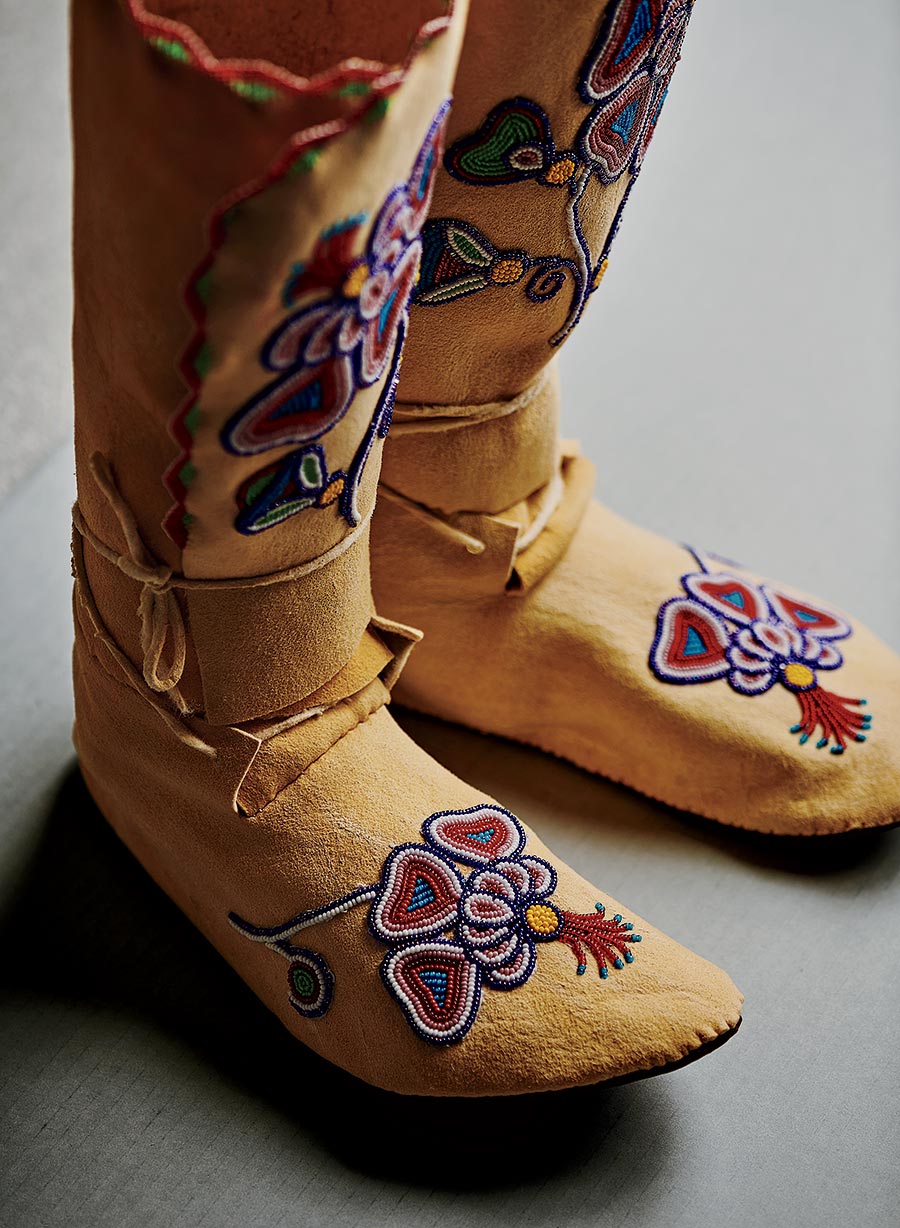Growing up on the Apsáalooke (also known as the Crow) reservation in Garryowen, Montana, during the 1980s and ’90s, Nina Sanders felt deeply tied to her culture, absorbing stories about her ancestors and their spirituality and acts of bravery in battle. But the connection frayed when she entered the public school system and was forced to abandon the Apsáalooke language for English. As punishment for speaking in her native tongue, she says, “we would be put in separate rooms or sometimes get spanked by the principal.” That wasn’t all: “We were not allowed to practice our religion. And our history was not in the school’s history books.”
This cultural erasure became a driving force for the writer and scholar. As the curator of Apsáalooke Women and Warriors, opening this month at the Field Museum, Sanders celebrates an egalitarian society where, historically, male warriors protected the community while women served as caretakers of its culture. Twenty-one war shields, dating to the 19th century and taken from the museum’s collection, will be on display for the first time at the exhibition, along with a ceremonial war bonnet adorned with a trail of feathers, a nine-foot-tall contemporary tipi made from canvas instead of traditional buffalo hide, and other cultural touchstones.
It’s the museum’s first large-scale exhibit curated by a Native American — and a step toward addressing problematic displays of such material in the past at the Field and elsewhere. (For example, human remains have been taken from Native American tribes and exhibited by institutions without permission.) Curators, Sanders says, have tended to be “people from New York City who’ve never seen a native person but went to college for anthropology, read about us in books, and saw us in Hollywood movies.” The Field has long had its Native American Hall, but in 2018 it announced a three-year renovation to the wing to rectify the ways that Indigenous people have been exploited.
That’s partly why Sanders is so committed to this exhibit. “What we create here is going to reshape the way that cultural institutions and communities work together, how exhibitions are constructed, and who gets to educate the public about Native American culture.”

Sanders became a curator almost by accident. One summer, while working as an art educator in Arizona, Sanders showed Native American families how to make dolls that resembled their people. She visited the archives of several local museums to prepare individualized packets tailored to each family, whether they were Apache, Navajo, Lakota, or otherwise.
The project inspired her to pursue a dual degree in American Indian studies and anthropology at Arizona State University. She graduated in 2015 and went to work with museums such as the National Museum of the American Indian, where she organized an exhibition of more than 250 historic Apsáalooke photographs.
The Field Museum approached Sanders, who is now based outside Phoenix, last March, when she began a fellowship at the Neubauer Collegium for Culture and Society at the University of Chicago. She was working on Open Fields, a yearslong initiative that brings together anthropologists, curators, tribal elders, and artists to figure out how museums can better depict and engage Indigenous communities.
For the Field exhibit, in addition to drawing on her own biography, Sanders leaned on 18 Apsáalooke scholars and artists, who contributed family stories as well as music, paintings, photos, beadwork, and clothing.
This is not the story of a moribund tribe. Despite underresourced schools, homelessness, and other systemic barriers, Sanders says, the Apsáalooke population has more than doubled since the 1970s.
“Not everyone lives in a tipi,” she says. “Not everyone rides a horse. I’m trying to educate people who really don’t have any experience with Indigenous people. Hopefully, non–Native Americans understand that we are still here. And we are flourishing.”
Details:Apsáalooke Women and Warriors. Mar. 13–Apr. 4, 2021. Field Museum. Near South Side. $17–$40. fieldmuseum.org


